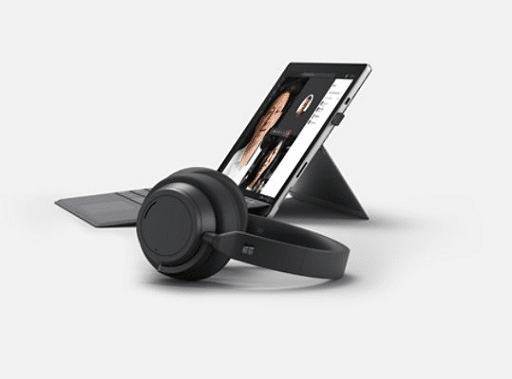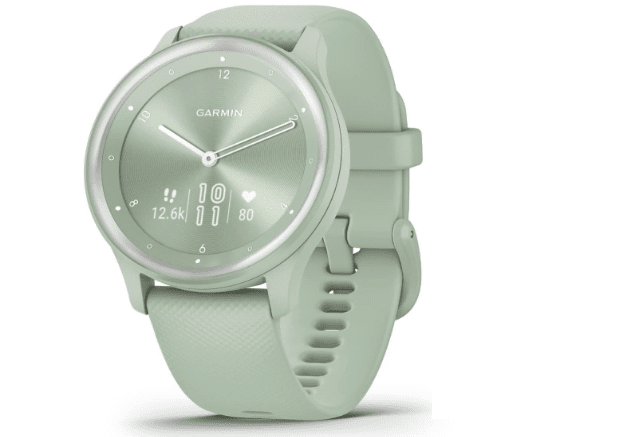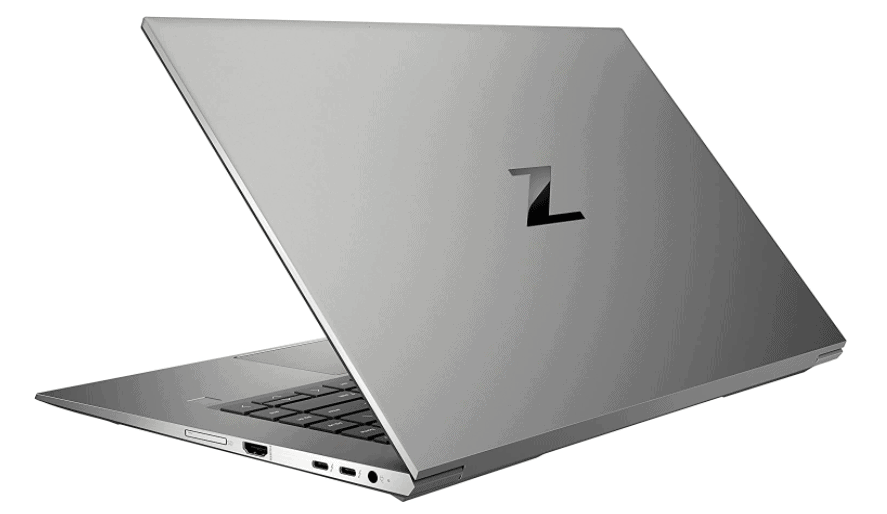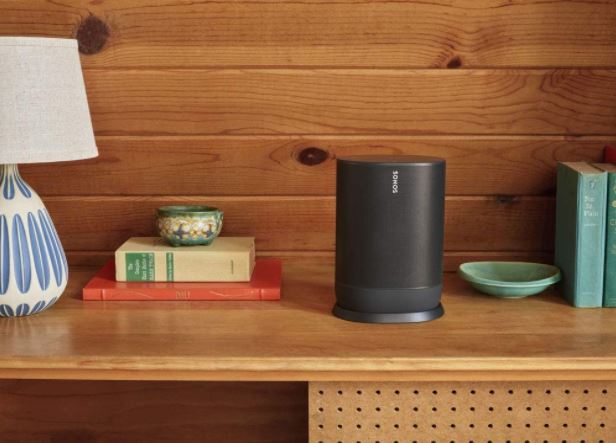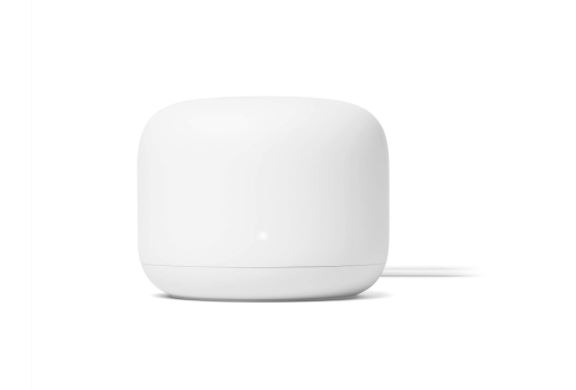Microsoft has released a new Surface Pro 7 Plus model, but it is only available in schools and businesses. Despite the timing, the launch does not coincide with CES 2021, which began today. The new Microsoft Surface Pro 7 Plus Plus looks identical to last year’s Surface Pro 7, but it receives several internal updates, including the latest 11th-generation Intel Tiger Lake processors, LTE support, and a removable SSD. It is still only available to Microsoft’s education and commercial customers, but pricing begins at $900.
This review will differ slightly from previous Surface Pro reviews because I already wrote an in-depth review of last year’s Surface Pro 7, which is still relevant. Instead, I’ll concentrate on what’s new with the Surface Pro 7+ in comparison to previous versions, as summarized below.
- New configuration options: Up to 32GB of RAM
- Design: New removable SSD enclosure
- Connectivity: New optional 4G LTE
- Performance: Intel 11th Gen + Iris Xe graphics
- Longevity: Larger battery, longer battery life
For the first time, you can order a Surface Pro with up to 32GB of RAM rather than just 16GB. That model, which includes a Core i7 processor and a 1TB SSD, will set you back a whopping $2,800, but for developers and Surface Pro fans, it is a welcome addition. That model, however, is not available with LTE.
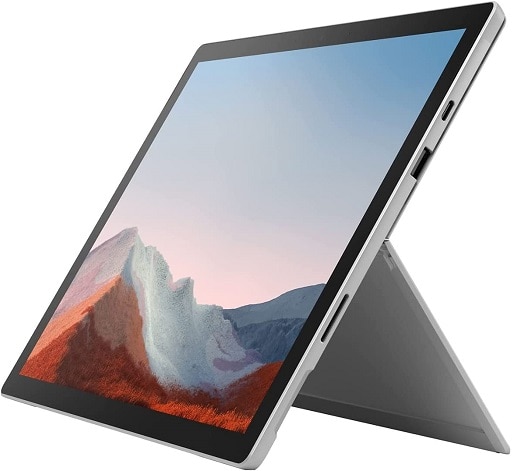
The new removable SSD enclosure follows in the footsteps of the Surface Pro X, which has featured a similar design since late 2019. This option may be valued by consumers, but it is driven by enterprise and government customers who want an easier way to upgrade hardware and ensure security.
Swapping out the SSD is a simple process. Pop the door open with a SIM tool, then remove the single T3 Torx screw to slide out the drive. The form factor is M.2 2230, which makes it smaller and more stubby than standard laptop SSDs, but the performance and concept remain the same.
Everything else about the Surface Pro 7+ is the same as it was with the Surface Pro 7, including the excellent dual-front facing speakers, color-accurate display that supports touch and inking, and overall design. Even the ports remain unchanged, with a single Type-A and Type-C (power, data, display out; no Thunderbolt) and a Surface Connect for power. As expected, a headphone jack is located on the upper left side.
You may also like Microsoft Surface Pro 8: The Intel Evo Platform Tablets
Microsoft Surface Pro 7 Plus with 4G LTE
Due to the inherent security flaws found when using open Wi-Fi networks, especially when traveling in airports or coffee shops, LTE is critical for business devices. Furthermore, having an always-connected PC is far more convenient than tethering with your phone.
Microsoft’s last Surface Pro with 4G LTE was the Surface Pro 5 in 2018. In those three years, Intel transitioned from dual-core to quad-core processing, resulting in a massive increase in multi-core performance. So it makes sense to see that option for business users in 2021.
Microsoft employs the Qualcomm Snapdragon X20 LTE Modem, which supports CAT 18 and up to 1.2 Gbps downloads as well as CAT 13 and 150 Mbps uploads. It’s not as fancy as Qualcomm’s newer X24 modem, which supports up to 2 Gbps download speeds, but it’s more than enough for most users. This modem is also a significant upgrade from the 2018 model, which only supported LTE Advanced CAT 9 download speeds of up to 450 Mbps.
It’s odd for Microsoft to skip 5G, which many companies, including HP and Lenovo, are offering in their 2-in-1 devices for 2021. Microsoft claims that its customers did not prioritize 5G, which may be true, but it appears unlikely to be true in two years. Nonetheless, 4G LTE is still quite capable, especially when paired with the latest Intel hardware.
The Surface Pro 7+ accepts both physical nano-SIM and eSIM cards. Users can switch between the two profiles dynamically via network properties, making IT departments’ lives easier. Users can also purchase data while on the go using the Mobile Plans app, which activates instantly.
The laptop is SIM-unlocked and supports global LTE bands, including 1, 2, 3, 4, 5, 7, 8, 12, 13, 14, 19, 20, 25, 26, 28, 29, 30, 38, 39, 40, 41, 66. Compared to the previous LTE Surface Pro, Surface Pro 7+ supports more bands, including 13, 25, and 66.
LTE performance on the Surface Pro 7+ is excellent, owing primarily to the optimal antenna placement. Microsoft deserves credit for placing the antenna on the device’s top and back, ensuring maximum reception exposure.
Interestingly, Microsoft conceals the 4G LTE antenna using a process that they had to invent. For proper reception, a laptop must have non-metal “windows” built in. Microsoft achieves this through a “gapless and stepless” process that fuses the antenna to the chassis seamlessly. It’s a small detail, but it highlights Microsoft’s attention to detail and design.
The modem never crashed or had trouble reconnecting during my testing. With a good T-Mobile connection, I was able to download nearly 40 Mbps and upload an impressive 47 Mbps in my office. Due to the lack of LTE, the Surface Pro 7+ is limited to Wi-Fi 6 powered by Intel. Bluetooth 5.0 is also available for peripherals and headphones.
You may also like Microsoft Surface Pro 9: Release Date and Specs
Benchmarks
The heart of the Surface Pro 7+ is its upgraded Intel 11th Gen processor and Iris Xe graphics (available in Core i5 and i7 models). The Core i3 and i5 models, like previous Surface Pro generations, remain fanless, while the Core i7 model employs active cooling when necessary. (In the i5 model, Microsoft uses the empty fan slot for the 4G LTE modem.)
For all intents and purposes, the Surface Pro 7+ is the fastest Surface (Surface Studio 2 being the exception). While multi-core scores are significantly higher than on 10th Gen models, Iris Xe graphics contribute the most. On Cinebench 23, the Surface Pro 7+ with a Core i5 not only outperforms the Surface Pro 7 but also the Surface Pro 6 with a Core i7-8650U. Surface Pro 7+ is the fastest Surface on Geekbench 5, even outperforming a Surface Book 3 15 “with a 2020-era Core i7-1065G7 processor
Surface Pro 7+ nearly doubles Surface Pro 7 and triples Surface Pro 6 in 3Dmark Time Spy, which uses CPU and GPU. 15-inch Surface Book 3 “It saves itself thanks to its much beefier NVIDIA GeForce GTX-1660 Ti, but only just. These findings imply that the Core i7 Surface Pro 7+ would be even more impressive in terms of raw performance, albeit at the expense of a fan.
Another significant improvement is the noticeable increase in storage performance. The 256GB Samsung 830 SSD gives the Surface Pro 7+ faster sequential read speeds (2,200 MB/s) and an even larger jump in sequential write speeds (1,076 MB/s) over the Surface Pro 7. The disparity between Surface Pro 7+ and Surface Pro 6 is even more pronounced. It’s not quite PCIe 4, but it’s an improvement.
When compared to other modern laptops, the Surface Pro 7+ performs similarly to other devices in its class with similar hardware configurations. The results are unremarkable, but Microsoft is the only vendor using a fanless Core i5, while the rest are actively cooled. That is noteworthy.
Battery Life
When it comes to battery life, there are some interesting findings. Leaving 4G LTE turned on (but not actively used) has no effect on battery life. Running PCMark 10’s Modern Office Battery rundown benchmark (with LTE turned off, brightness set to 40%, and on recommended power), the Surface Pro 7+ achieved a run time of 11 hours and 13 minutes. Leaving LTE on and re-running the benchmark resulted in a runtime of 11 hours and 12 minutes, which is remarkably consistent.
With the same settings, the Surface Pro 7 only lasted 9 hours and 52 minutes. While an additional 1 hour and 20 minutes is not a huge benefit, for many users, that extra 90 minutes could be “make or break.” When you consider the obvious performance improvements of the Surface Pro 7+ and the availability of 4G LTE, it becomes even more impressive.
Turning to the Windows Battery Report, which is based on my actual usage, the Surface Pro 7+ ranges from 7 hours and 30 minutes to 11 hours with lighter use. Your experience will be determined by the brightness of the display and how hard you push the GPU.
Even without a fan, thermals are excellent, with the Surface Pro 7+ never becoming too hot to touch thanks to its vertical orientation and heat dissipation via the top vents.
You may also like Microsoft Surface Pro 6: A No USB-C Laptop
Pricing and availability
Pricing ranges from $899 for the Core i3 with 8GB of RAM and 128GB of storage (platinum) to $2,800 for the Core i7 with 32GB of RAM and 1TB of storage (platinum). Education models are $100 less expensive, only come in platinum, and do not include LTE.
The Surface Pro 7+ is now available, but you won’t be able to buy one at your local store. The Surface Pro 7+ is intended for business users, and you must order one from a Surface Commercial Authorized Device Reseller or the Microsoft Store Business Desk.
CamRojud may earn a certain commission on products purchased via our links, which supports our effort on this content.
Would you like to read more about Microsoft Surface Pro 7 Plus-related articles? If so, we invite you to take a look at our other tech topics before you leave!






